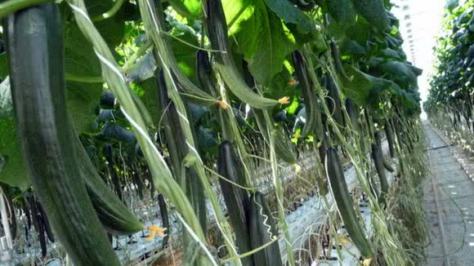Did you know that peak cucumber season isn’t in summertime, but is actually now? Or that some Finnish farms can churn out ten tons of the revered salad-bowl staple in a single week? We delve into the technology race that keeps our fridges stocked with one of the nation’s most popular vegetables.
There can be few foodstuffs that embody the ethos of Finnish cuisine like the humble cucumber. Subtly flavoured, unassuming and versatile, the country’s second-most consumed vegetable is a staple on the Finnish dining table at breakfast, lunch and supper.
Hannu Varpio’s greenhouse in Orimattila is a formidable production facility. His 3,300 square metre farm can churn out ten tons of cucumbers in a single week. And in winter his greenhouses can create ideal growing conditions.
It’s not just cucumbers. Finnish-grown tomato production also reaches its peak during the winter months, especially when the days start to lengthen and natural light increases.
“In the greenhouse, we can feed in carbon dioxide which gets trapped inside, and the humidity can be closely controlled. Meanwhile summers can be too dry or hot. When it’s windy, the humidity and CO2 are blown away,” Varpio says. “Farming in summer is definitely riskier, and the yield usually smaller because of the natural conditions.”
The ideal temperature inside a greenhouse is around 20 degrees.
“January and February are peak growing months for cucumbers. With the onset of spring when the sun gets warmer, greenhouses have to be ventilated. That also removes some of the carbon dioxide, which hampers production,” says greenhouse expert Hanna Mononen of the Association of Commercial Growers.
Cucumber farming is extremely technology-intensive, and therefore expensive. The carbon dioxide is generated from burning natural gas, while providing heating and humidity requires artificial light.
“The technology behind lighting has developed with good results over the past 20 years. At the moment though the ones we’re using are rather inefficient, so only a third of the energy is turned into light – the rest is lost as heat. In winter of course that works out for us, but it’s not cheap,” says Hannu Varpio.
Modern greenhouse cultivation requires practitioners to keep learning and developing new methods, with new technology appearing on the market all the time.
“It’s a kind of race that you have to keep pace with and follow developments. I think the next leap forward will be new lighting solutions. I for one am very interested in LED technology,” Varpio says.
Brown Mang Onwuka
